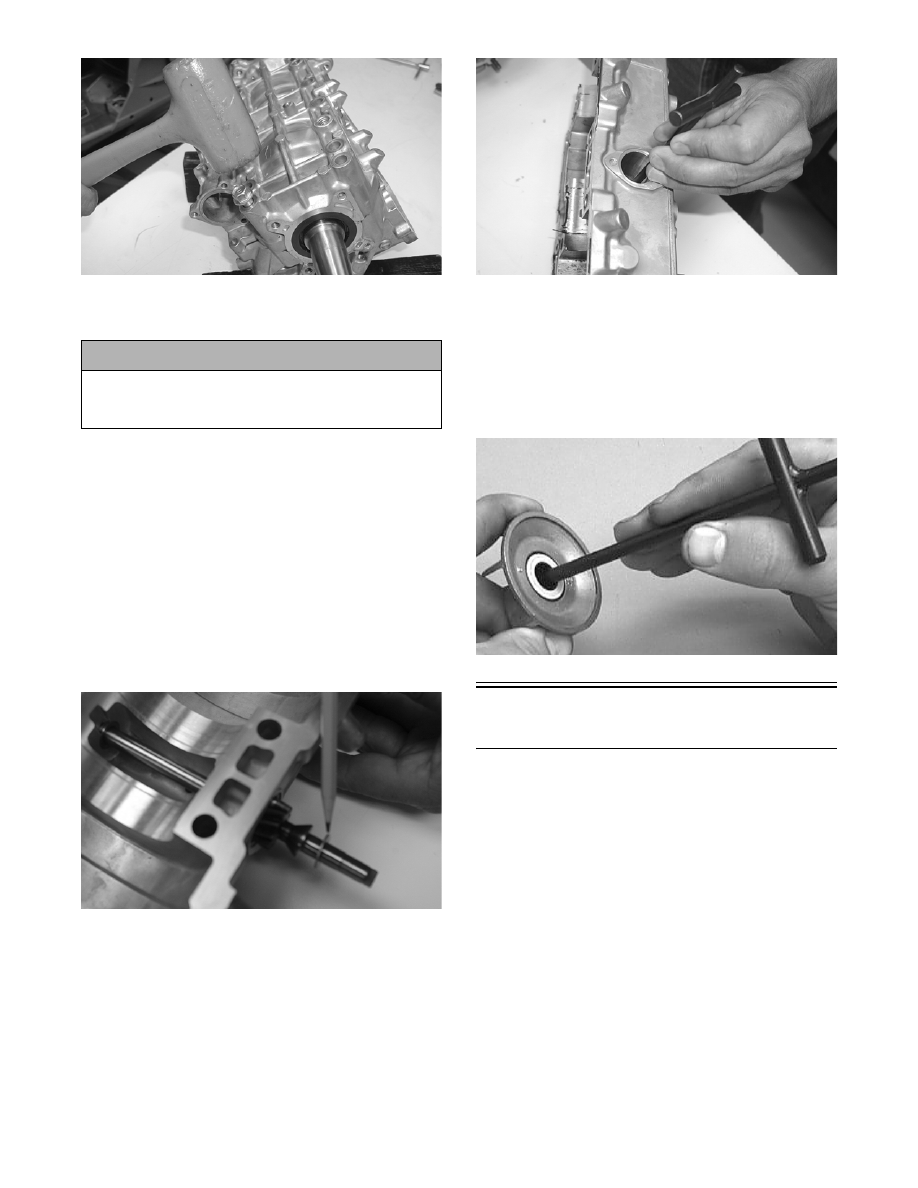Snowmobile Arctic Cat (2008 year). Manual - part 50

2-138
FC034
25. Lift the bottom half of the crankcase off the top
half.
26. Lift the crankshaft free from the top half of the
crankcase and slide the crankshaft oil seals off the
crankshaft. Account for the C-ring. Remove the
bearing retaining pins and account for the crank-
case dowel pins.
NOTE: The end bearings are not pressed onto
the crankshaft. After removing the seals, use care
not to allow the bearings to slide off the crank-
shaft.
27. Remove the oil-injection pump/water pump drive-
shaft from the lower crankcase half. Account for
the thrust washer on the outer end of the shaft.
FC035
NOTE: Do not replace the inner seals unless the
water pump shows signs of leaking coolant out of
the small bleed hole in the bottom half of the
crankcase. If a water pump seal is to be replaced,
use the Water Pump Bearing and Seal Kit.
28. Place the crankcase on the bench with the water
pump side down. Using the long seal driver, drive
the mechanical water pump seal from the crank-
case.
FC036
29. Using a pair of snap ring pliers, remove the snap
ring securing the inner seal in the crankcase.
30. Using the hooked end of the tool, pull the inner
seal free of the crankcase.
31. Using the hooked end of the tool, pry the seal ring
from the backside of the water pump impeller.
AN327D
Cleaning and Inspecting
Engine
NOTE: Whenever a part is worn excessively,
cracked, or damaged in any way, replacement is
necessary.
CYLINDER HEAD
1. Using a non-metallic carbon removal tool, remove
any carbon buildup from the combustion chambers
being careful not to nick, scrape, or damage the
combustion chambers or the sealing surfaces.
2. Inspect the spark-plug holes for any damaged
threads.
3. Inspect the cylinder head for flatness using a
straightedge and a feeler gauge. Acceptable
warpage must not exceed 0.05 mm (0.002 in.).
! CAUTION
Care must be taken to not allow the connecting rods
to drop onto the sealing surface of the bottom case
half.